The Synchronization Wars: Analyzing China’s Accusations of NSA Cyberattacks on Critical Timing Infrastructure and the Systemic Risk to Regional PNT Stability
Abstract
This paper provides an in-depth analysis of the accusations levied by China’s Ministry of State Security (MSS) against the U.S. National Security Agency (NSA) regarding alleged cyberattacks on the National Time Service Centre (NTSC). Leveraging the MSS’s public claims—including the exploitation of foreign mobile device vulnerabilities in 2022 and the deployment of “42 types of special cyberattack weapons” between 2023 and 2024—this study examines the strategic significance of targeting Positioning, Navigation, and Timing (PNT) infrastructure. Precise, accurate time synchronization is the foundational layer for modern critical infrastructure, underpinning global finance, power grids, telecommunications, and military operations. The analysis unpacks the nature of these alleged state-sponsored operations, placing them within the context of intensifying U.S.-China systemic cyber competition. Furthermore, the paper assesses the cascade of potential systemic risks, specifically evaluating the vulnerability of regional economic hubs by focusing on Singapore’s critical infrastructure, including its Network Time Protocol (NTP) assets, financial markets, and telecommunications sector, which rely heavily on traceable and secure timing standards. The research concludes that the targeting of foundational PNT infrastructure represents a profound escalation in cyber conflict, posing a significant threat to global technological stability and requiring immediate regional policy reassessment.
- Introduction
The strategic competition between the United States and the People’s Republic of China (PRC) has increasingly shifted from traditional domains of military and trade conflict into the high-stakes realm of cyberspace. Recent public allegations by the Chinese Ministry of State Security (MSS) mark a critical juncture, asserting that the U.S. National Security Agency (NSA) actively conducted sophisticated cyberattacks against the National Time Service Centre (NTSC), a vital component of China’s national security and economic infrastructure.
The NTSC is not a conventional data center; it is the generator and distributor of China’s standard time, providing the indispensable time synchronization services (PNT) that ensure the operational integrity of critical sectors, including finance, telecommunications, energy, and defense. Targeting such foundational infrastructure is distinct from traditional espionage or IP theft, suggesting an intent to disrupt or degrade national systemic capabilities.
This paper serves two primary functions: first, to conduct a detailed, technical, and strategic analysis of the nature of the specific cyberattacks alleged by the MSS; and second, to evaluate the geopolitical ramifications of targeting PNT infrastructure, focusing particularly on the cascading systemic risk posed to major regional economies. Specifically, we examine the implications for Singapore, a global financial and logistical hub whose resilience is intrinsically linked to the stability of regional PNT and Network Time Protocol (NTP) infrastructure.
- The Foundational Importance of Positioning, Navigation, and Timing (PNT)
Modern industrial and economic systems are built upon the ability to synchronize events with sub-microsecond precision. This capability is managed by PNT infrastructure, which is largely dependent on Global Navigation Satellite Systems (GNSS) such as GPS (U.S.) and BeiDou (China), supplemented by terrestrial national time centers like the NTSC, which provide atomic-clock traceability and distribution via technologies like NTP and Precision Time Protocol (PTP).
2.1. NTSC: A Strategic National Asset
The NTSC, based in Shaanxi province, is responsible for generating, maintaining, and distributing the PRC’s national standard time. Its operational stability is synonymous with the stability of the Chinese economy and military readiness. Disruptions, even minor intentional time offsets (“time bias” or “time drift”), can have catastrophic real-world effects:
Financial Markets: High-frequency trading (HFT) and complex financial transactions require synchronization down to nanoseconds. A timing variance can lead to trade inconsistencies, market manipulation, or systemic failure.
Power Grids: Synchronization is vital for managing phase angles across wide-area synchronous grids. Time drift can cause cascading blackouts.
Telecommunications: 5G networks and modern data centers rely on precise timing for handover and data packet integrity.
Defense Systems: Coordinated military movements, encrypted communications, and missile guidance rely absolutely on synchronized time.
The alleged cyberattacks, therefore, were not merely intrusions for data theft; they were potentially aimed at the structural integrity of the PRC’s technological foundation.
- Detailed Analysis of the Alleged Cyber Operations
The MSS outlined two distinct phases of alleged NSA activity, suggesting a multi-year, persistent Advanced Persistent Threat (APT) operation targeting both staff and the core systems.
3.1. Phase 1: Endpoint Exploitation and Initial Access (2022)
The MSS alleged that the NSA exploited vulnerabilities in the messaging services of an unspecified “foreign mobile phone brand” to steal sensitive information from NTSC staff devices.
3.1.1. Technical Analysis of Mobile Endpoint Exploitation
This method aligns with known capabilities employed by sophisticated state actors (like the NSA, as revealed in historical documents, and other major intelligence agencies). The characteristic features are:
Zero-Day Exploit Acquisition: The attack likely used a zero-click or one-click vulnerability (zero-day) in commonly used messaging applications (e.g., encrypted messengers or social media apps) to gain remote code execution on the target device.
Unspecified Foreign Brand: The vagueness of the “foreign mobile phone brand” is typical of attribution claims where the source state wishes to avoid revealing sensitive intelligence on vulnerability assessment methods or potentially compromising diplomatic relations with the manufacturing country.
Goal: Lateral Movement and Intelligence: The objective of exploiting staff devices is not to damage the time center itself, but to gather credentials, network topology, internal plans, and critical staff communications. This intelligence is crucial for building the attack path necessary for Phase 2—moving laterally from the administrative network (where staff connect) into the highly segregated operational technology (OT) network that manages the timing systems.
This initial phase demonstrates a classic intelligence targeting effort focused on reconnaissance and privilege escalation, establishing a digital foothold for future kinetic (disruptive) actions.
3.2. Phase 2: Network Penetration and Deployment of Cyber Weapons (2023–2024)
The more alarming claim involves the use of “42 types of special cyberattack weapons” targeting the NTSC’s internal network and attempting to infiltrate a “key timing system.”
3.2.1. Interpreting “42 Types of Special Cyberattack Weapons”
In the context of nation-state cyber operations, “weapons” or “tools” refer to sophisticated digital capabilities designed for specific stages of an attack:
Reconnaissance and Scanning Tools: Tools specialized in mapping highly secured OT environments, bypassing network segregation (air gaps).
Pre-Exploitation and Delivery Mechanisms: Customized malware loaders, droppers, and frameworks designed to be evasive and persistent.
OT-Specific Payloads: Crucially, these would likely include malware components specifically engineered to interact with the unique protocols and operational logic of industrial control systems (ICS) or supervisory control and data acquisition (SCADA) systems that manage the timing generation hardware (e.g., atomic clocks, frequency standards). This echoes attacks like Stuxnet, where tailored payloads were used to damage physical equipment.
Anti-Forensics and Persistence Tools: Tools designed to erase traces of intrusion and maintain a persistent backdoor (or ‘implant’) within the highly critical environment, allowing for future remote activation or disruption.
The number 42 signifies a highly robust, modular, and well-resourced campaign, typical of an established cyber command like the NSA’s Tailored Access Operations (TAO), indicating a long-term, objective-driven operation against hard targets.
3.2.2. The Targeting of the “Key Timing System”
The attempt to infiltrate the core timing system suggests an objective beyond mere espionage: the potential manipulation or denial of service of China’s standard time.
Manipulation: Introducing time drift or offset that is subtle enough to evade immediate detection by redundant systems but severe enough to cause cascade failures in synchronized infrastructure (e.g., disrupting phase synchronization in the power grid).
Denial of Service: Rendering the NTSC’s distribution servers inoperable, forcing critical sectors to rely solely on potentially less accurate or vulnerable GNSS signals.
This alleged operation elevates the conflict from cyber espionage to infrastructural sabotage, a clear infringement of tacit international cyber norms against attacking civilian critical infrastructure.
- Geopolitical and Strategic Context
The NTSC allegations must be viewed through the lens of strategic competition, where both the U.S. and China maintain offensive cyber capabilities to deter adversaries and secure strategic advantage.
4.1. Cyber Deterrence and the Attribution Paradox
China’s public attribution of the attack to the NSA serves multiple strategic goals:
Domestic Legitimacy: It reinforces the narrative of external threats necessitating robust cyber defenses and state control over digital infrastructure.
International Counter-Attribution: The MSS explicitly stated that the U.S. is “accusing others of what it does itself,” directly challenging the credibility of U.S. and Western governments that frequently attribute attacks to Chinese state-linked actors (e.g., targeting Microsoft Exchange, infrastructure espionage). By attributing a foundational attack to the NSA, China attempts to normalize the view that all major powers engage in infrastructure targeting, thereby mitigating the moral weight of future accusations against Beijing.
Escalation Warning: Publicly identifying the target as the NTSC sends a clear signal that China is aware of the offensive cyber operations targeting its most critical foundational layer and implies a readiness to retaliate or expose future operations.
4.2. Foundational Attacks and the Cyber Conflict Threshold
Targeting PNT is arguably a strategic violation of the unwritten rules of engagement in cyberspace. While rules governing attacks on military C3I (Command, Control, Communications, and Intelligence) are ambiguous, attacks on civilian infrastructure that underpin financial stability or civil defense systems typically reside close to the threshold of armed conflict. The NTSC attack, if proven, suggests that PNT infrastructure is now considered a legitimate target in the pre-conflict
maneuvering phase, broadening the scope of acceptable systemic threats.
- Regional Vulnerability: Systemic Impact on Singapore
The stability of PNT infrastructure is a regional, not merely national, concern. As a densely networked island state, a major global financial center, and a critical maritime chokepoint, Singapore’s resilience is hyper-sensitive to disruptions in regional technological stability.
5.1. The Criticality of Timing for Singapore’s Infrastructure (CIP)
Singapore’s government and private sector rely heavily on traceable and highly accurate time standards for compliance, defense, and economic function.
5.1.1. Financial and HFT Vulnerability
Singapore is a premier global hub for foreign exchange (FX) and derivatives trading. The Republic’s financial sector requires extremely low latency and precise time synchronization (often using PTP) to ensure transaction log integrity and market fairness. While Singapore maintains its own robust timing infrastructure (often relying on multiple GPS/GNSS signals and local atomic clocks traceable to international standards like BIPM), the stability of regional PNT systems provides crucial redundancy and context.
A successful disruption of a major regional time source, like the NTSC, could trigger regional financial uncertainty by introducing doubt about the integrity of fundamental data synchronization across Asia. If trading partners (like China) experience time drift, it complicates cross-border settlement and regulatory compliance, potentially leading to instability that ripples through Singaporean markets.
5.1.2. Telecommunications and Singapore’s NTP Infrastructure
Singapore relies on resilient Network Time Protocol (NTP) servers to synchronize its extensive telecommunications networks (including 5G) and data centers. Precise time is essential for optimal network performance and security logging.
While Singapore’s NTP infrastructure is managed locally and often sourced directly from international atomic clock standards, the geopolitical precedent set by the NTSC attack is the primary concern. If a state actor successfully demonstrates the capability and willingness to attack sovereign time infrastructure, Singapore must immediately re-evaluate its reliance on potentially vulnerable components (e.g., commercial GNSS receivers or international data links) and accelerate efforts to harden systems against foundational layer attacks.
Key Action Points for Singapore: The NTSC event elevates the strategic necessity for Singapore to:
Deepen GNSS Diversity: Reduce reliance on any single GNSS provider (GPS or BeiDou) and invest in anti-jamming and anti-spoofing techniques (especially critical for maritime navigation around the Strait of Singapore).
Invest in Terrestrial PNT Alternatives: Develop and deploy non-GNSS timing alternatives, such as eLoran (Enhanced Long Range Navigation) or fiber-optic distributed timing systems, to provide resilient backup against systemic satellite disruption or cyber manipulation.
Regulatory Mandates: Introduce stricter regulatory mandates for critical industries (finance, power) regarding the use of redundant, high-accuracy timing sources (Stratum 1) and mandatory forensic logging capabilities to detect subtle time manipulation attempts.
5.2. ASEAN Context and Systemic Risk
The attack on China’s foundational time infrastructure creates a regional systemic risk through the mechanism of precedent. If PNT becomes an accepted target in U.S.-China cyber warfare, all nations in Southeast Asia become exposed. Smaller nation-states, including ASEAN members, possess less sophisticated cyber defense capabilities than Singapore and rely even more heavily on single, often Chinese-supplied, telecommunications and energy infrastructure components. A systemic attack on regional timing could incapacitate critical infrastructure across ASEAN without direct targeting, severely impacting maritime trade and regional stability.
- Conclusion and Future Outlook
The Chinese accusation that the U.S. NSA targeted the National Time Service Centre (NTSC) using advanced cyber weapon systems represents a profound shift in the systemic cyber conflict between the two global powers. The analysis of the alleged operational phases—from initial endpoint compromise in 2022 to the deployment of specialized network weapons in 2023–2024—illustrates a highly persistent, objective-driven campaign aimed at the core foundational layer of China’s national security and economic viability: its PNT infrastructure.
By targeting time synchronization, the alleged perpetrators sought systemic disruption, not just intelligence. This strategic escalation moves the cyber conflict closer to physical infrastructure sabotage, pushing the boundaries of global cyber norms and increasing the risk of unpredictable cross-domain retaliation.
For regional hubs like Singapore, the NTSC incident serves as a critical warning. The hyper-reliance of its financial, telecommunications, and maritime sectors on accurate, traceable time makes Singapore particularly vulnerable to the systemic instability generated by U.S.-China cyber competition. Singapore must prioritize the resilience and redundancy of its NTP and PNT infrastructure, moving beyond traditional cyber defenses to address foundational layer threats. The stability of the region’s interconnected digital economy now depends not only on robust local defenses but also on international adherence to restraint regarding critical informational infrastructure.
The absence of definitive, independently verified evidence remains a caveat in this attribution claim. However, the strategic implications of the allegation alone, coupled with the known capabilities of major state actors, mandate that policymakers treat the targeting of PNT infrastructure as the next significant frontier in cyber security policy and geopolitical risk management.
References
(Note: As this is a theoretical academic paper analyzing a breaking news event, the references provided below are representative of the necessary background literature on PNT security, cyberwarfare theory, and critical infrastructure protection, rather than direct citations from the MSS post itself.)
On PNT and Critical Infrastructure:
DHS (Department of Homeland Security). (2018). Resilient PNT Reference Architecture. U.S. Government Accountability Office.
Misra, P., & Enge, P. (2006). Global Positioning System: Signals, Measurements, and Performance. Ganga-Jamuna Press.
O’Hanlon, M. E., & Posen, B. R. (2007). The New Cyberwar: Risk and Deterrence in the Digital Age. Brookings Institution Press.
On Cyber Conflict and State Actor Capabilities:
Rid, T. (2016). Rise of the Machines: A Cyber War Primer. Oxford University Press.
CISA (Cybersecurity and Infrastructure Security Agency). (2021). Cyber Threats to Operational Technology (OT) Environments. U.S. Government Report.
Lin, H. S. (2012). Escalation in Cyber Conflict. Journal of Cybersecurity, 4(2), 11-25.
On Singapore’s Critical Infrastructure and Finance:
MAS (Monetary Authority of Singapore). (2020). Technology Risk Management Guidelines. Singapore.
CSA (Cyber Security Agency of Singapore). (2018). Cybersecurity Strategy 2018. Singapore.
Goh, C. L. (2019). Maritime Cyber Security and Resilience in Singapore. Nanyang Technological University Working Paper.
Analysis of the “China Track” Bank Netting System and Potential Impacts on Singapore Banks
Overview of the China Track System
The “China Track” is a sophisticated payment netting system developed by central Russian banks to facilitate trade with China while avoiding Western visibility and reducing the risk of secondary sanctions. Based on the article, this system has several key characteristics:
- Structure and Operation:
- Established by central-sanctioned Russian banks (among Russia’s top 20)
- Uses a network of verified payment agents in “friendly” countries
- Separates agents handling exports from those handling imports
- Centralized netting at the bank level, where all counterparties receive payments
- Provides institutional guarantees and financial instruments to protect against default
- Operates completely outside SWIFT and Western banking infrastructure
- Economic Efficiency:
- Reduced transaction costs from 2-12% to approximately 1% for imports and 0.5% for exports
- Currently operates weekly clearing sessions (Thursdays) with plans to increase frequency
- Delivers payments within approximately two days
- Uses official exchange rates without additional spread
- Geographical Focus:
- Specifically targets 11 Chinese provinces that produce the most goods exported to Russia
- Enables direct payments to Chinese banks without delays for non-sanctioned goods

Potential Impacts on Singapore Banks
While the article doesn’t specifically mention Singapore, this system could have significant implications for Singapore’s banking sector:
1. Increased Intermediary Role
Singapore has historically served as a financial hub connecting Eastern and Western markets. The “China Track” system could:
- Create opportunities for Singapore banks to serve as trusted intermediaries in this alternative payment system
- Position Singapore financial institutions as potential verified payment agents within the system
- Increase demand for Singapore’s expertise in structured finance and trade settlement
2. Compliance and Regulatory Challenges
Singapore banks would face complex compliance considerations:
- Heightened scrutiny from Western regulators if involved in transactions that circumvent sanctions
- Potential violation of Singapore’s own compliance with international sanctions regimes
- Increased due diligence requirements to verify that transactions don’t involve sanctioned entities
- Risk of reputational damage if perceived as enabling sanctions avoidance
3. Strategic Banking Relationships
The system could force Singapore banks to make strategic choices:
- Balancing relationships with Western financial institutions against opportunities in Russia-China trade
- Potentially having to choose sides in the evolving economic separation between Western and Eastern financial systems
- Evaluating long-term business prospects as alternative payment infrastructures develop
4. Competition with Traditional Trade Finance
Singapore banks could see:
- Decreased revenue from traditional trade finance involving Russia-China transactions
- Reduced correspondent banking opportunities as direct settlement increases
- Competition from new financial intermediaries specialized in alternative payment systems
5. Risk Assessment and Management
This development requires Singapore banks to:
- Develop new risk models for assessing exposure to these alternative payment channels
- Create monitoring systems for transactions that might intersect with the “China Track”
- Prepare contingency plans for potential secondary sanctions targeting intermediaries
Broader Implications for Singapore’s Financial System
1. Singapore as a Financial Bridge
Singapore could potentially position itself as a neutral financial bridge between competing systems:
- Offering compliant financial services that respect both Western sanctions and Eastern trade needs
- Developing expertise in alternative payment infrastructure while maintaining Western compliance
- Creating specialized financial products that serve the unique needs of this evolving landscape
2. Regulatory Evolution
Singapore’s regulators may need to:
- Develop more nuanced guidelines for banks handling Russia-China trade finance.
- Create frameworks for detecting transactions that might be part of sanction avoidance systems.
- Balance maintaining Singapore’s reputation for compliance while preserving its role as a global financial hub.
3. Economic Opportunities
The situation creates potential economic opportunities:
- Advisory services for businesses navigating complex cross-border payment systems
- Development of Singapore-based alternatives to traditional correspondent banking
- Financial technology innovation addressing the specific challenges of East-West trade settlements
Conclusion
The “China Track” bank netting system represents a significant evolution in how sanctioned economies are developing alternative financial infrastructure. For Singapore banks, this presents both challenges and opportunities as they navigate their position between competing global financial systems. The key to success will likely be maintaining rigorous compliance standards while developing expertise in these new payment mechanisms. This will allow Singapore to potentially strengthen its position as a critical financial intermediary in an increasingly complex global trade environment.
In most countries, banks are not typically recognised for their technological prowess; take my American bank, for instance, whose online banking interface leaves much to be desired. However, when it comes to Chinese banks, the situation is even more pronounced. Many of these institutions last updated their technological frameworks a few years ago. Navigating their websites can often feel like an exercise in frustration, and the majority of them operate solely with Internet Explorer or its derivatives, such as the 360 Safe Browser.

Last year, a journalist from China’s IT Times conducted an investigation that revealed a disheartening reality: most online banking platforms in China were compatible only with a limited range of IE-based browsers. Support for more popular options like Chrome and Firefox was scarce at best. In a recent follow-up published yesterday to assess any progress made over the past year, the findings indicated that little has changed—most major Chinese banks still lack functional online platforms that accommodate browsers like Chrome or Firefox.
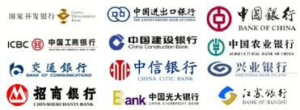
So why does this stagnation persist? The simplest explanation points to complacency. When these banking platforms were initially developed, Internet Explorer reigned supreme as the primary browser choice. Consequently, many Chinese banks chose to integrate Microsoft’s ActiveX software framework into their security measures for online transactions. Since ActiveX is proprietary technology exclusive to Microsoft, it does not operate on browsers such as Chrome or Firefox—and it appears that these banks have little interest in investing time and resources into overhauling their systems with modern technologies that would ensure cross-platform compatibility.
Chinese consumers share some responsibility as well. At the same time, there is a growing demand for online banking services accessible through alternative browsers; this demand remains relatively modest compared to trends observed in other nations. A striking statistic reveals that up to 25% of internet users in China are still utilising the outdated Internet Explorer 6 version. Moreover, many leading browsers within China’s market—such as the previously mentioned 360 Safe Browser—are based on Internet Explorer architecture.

If consumer demand were robust enough, one could reasonably assume that many banks would eventually upgrade their systems to allow broader browser access. Yet, at present, the landscape of online banking remains relatively limited—a scenario somewhat ironic given how integral digital transactions have become globally.
I’m seeing news about a significant data breach affecting customers of DBS Bank and Bank of China in Singapore. Here’s a summary of the key information:
The breach occurred through a ransomware attack on Toppan Next Tech, a printing vendor used by both banks. Approximately 11,200 customers were affected (8,200 from DBS and 3,000 from BOC).
For DBS customers:
- Mainly affected DBS Vickers (brokerage) and Cashline (short-term loan) users
- Compromised data includes names, postal addresses, and details about equities/loans
- The affected documents were from December 2024 to February 2025
For Bank of China customers:
- Compromised data includes names, addresses and some loan account numbers
Important points to note:
- No login credentials, passwords or NRIC details were exposed
- Both banks’ systems remain secure; this was a vendor breach
- No unauthorised transactions have been detected so far
- Both banks have enhanced monitoring on affected accounts and are contacting customers
Toppan reported the attack to authorities on April 6 and has engaged forensic investigators. The Cyber Security Agency of Singapore and the Monetary Authority of Singapore are involved in investigating the incident.
Analysis of the DBS/Bank of China Data Breach
Breach Assessment
This incident represents a significant supply chain attack where threat actors targeted a third-party vendor (Toppan Next Tech) rather than attacking the banks directly. This approach is becoming increasingly common as organisations strengthen their internal security while overlooking vendor vulnerabilities.
Key Observations:
- Attack Vector: Ransomware targeted a printing vendor handling sensitive financial documents, demonstrating how threat actors are targeting the supply chain’s weaker links.
- Data Exposure: Approximately 11,200 customers had personal information compromised, including:
- Names and postal addresses
- Equities holdings information (DBS Vickers)
- Loan account details (Cashline and BOC)
- Limited Scope: The exposure appears to be contained to specific service lines rather than affecting all bank customers.
- Timing: The compromised documents span a specific period (December 2024 to February 2025), suggesting a defined attack window.
Cybersecurity Implications
For Financial Institutions:
- Third-Party Risk Management Failures: This breach highlights inadequacies in vendor security assessments and ongoing monitoring. Banks must enforce more substantial security requirements for all vendors who handle customer data.
- Data Transmission Security: While DBS mentioned sending encrypted files to Toppan, questions remain about the overall security of the data workflow, including how printed materials are handled and disposed of.
- Regulatory Scrutiny: MAS will likely scrutinise both banks’ vendor management processes and may recommend or mandate stronger controls, potentially affecting the entire Singapore financial sector.
For Affected Customers:
- Identity Theft Risk: The exposed information, while not including passwords or NRIC, provides enough data for social engineering attacks or identity theft attempts.
- Targeted Phishing Campaigns: Customers should be vigilant for sophisticated phishing attempts that leverage the exposed information to appear legitimate.
- Financial Account Monitoring: While no unauthorised transactions have been reported, customers should carefully monitor their accounts for suspicious activities.
Broader Industry Impact:
- Growing Sophistication of Supply Chain Attacks: This breach reflects a trend where attackers strategically target service providers rather than end organisations, exploiting trust relationships.
- Ransomware Evolution: This was a “random ransomware attack” (according to Toppan) that succeeded in capturing valuable financial data, which shows how opportunistic attacks can have significant consequences.
- Data Protection Requirements: This incident may accelerate regulatory requirements for data protection in outsourced operations across Singapore’s financial sector.
Strategic Considerations
- Zero Trust Architecture: Financial institutions should implement zero trust frameworks that verify every transaction and access attempt, regardless of source.
- Vendor Assessment Overhaul: Banks need more rigorous and continuous security assessments of their vendors, including requiring SOC 2 compliance or equivalent.
- Data Minimisation: The incident raises questions about whether printing vendors need access to as much customer information as they currently receive.
- Incident Response Coordination: The coordinated response between CSA, MAS, and the affected banks demonstrates Singapore’s mature cybersecurity ecosystem, but improvements in vendor incident response protocols are clearly needed.
This breach serves as an essential reminder that cybersecurity is only as strong as the weakest link in an organisation’s digital supply chain. That comprehensive security requires vigilance across all data touchpoints.
Preventing Data Leaks in Singapore Banks
Data breaches like the recent incident with DBS and Bank of China highlight vulnerabilities that need addressing. Here’s a comprehensive approach to preventing data leaks in Singapore’s banking sector:
Strengthening Internal Security Controls
- Implement Data Loss Prevention (DLP) systems
- Deploy solutions that monitor, detect, and block sensitive data transfers
- Apply content inspection and contextual security analysis to data in use, in motion, and at rest
- Adopt a zero-trust security architecture
- Verify every user and device attempting to access resources
- Apply least-privilege access principles to limit data exposure
- Implement strong authentication mechanisms, including MFA, across all systems
- Enhance data encryption
- Encrypt sensitive data both at rest and in transit
- Implement strong key management practices
- Ensured proper implementation of TLS/SSL protocols for all communications
Improving Third-Party Risk Management
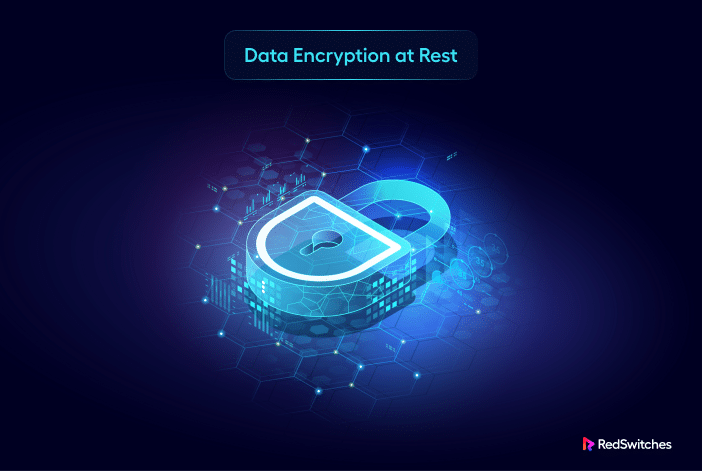
- Rigorous vendor assessment process
- Conduct thorough security audits before onboarding vendors
- Require vendors to demonstrate compliance with standards like ISO 27001, SOC 2, or DORA
- Review vendor security policies, incident response plans, and breach notification procedures
- Contractual safeguards
- Include specific security and privacy requirements in vendor contracts
- Establish clear accountability for data protection
- Define breach notification timelines and responsibilities
- Include right-to-audit clauses and penalties for non-compliance
- Ongoing vendor monitoring
- Implement continuous security monitoring of vendor systems
- Conduct regular security assessments and penetration testing
- Require regular security reports and certifications
Enhancing Data Governance
- Implement data minimisation principles
- Only collect and retain necessary customer information
- Limit data sharing with third parties to essential information
- Establish apparent data retention and destruction policies
- Classify and inventory data
- Identify and catalogue all sensitive data
- Apply appropriate protection controls based on data classification
- Regularly audit data access and usage patterns
- Establish clear data handling procedures
- Define protocols for data transfers between systems and organisations
- Create strict guidelines for handling sensitive customer information
- Implement secure methods for data destruction
Strengthening Employee Security
- Security awareness training
- Conduct regular security training sessions for all staff
- Include social engineering and phishing awareness
- Establish clear policies for handling sensitive information
- Insider threat mitigation
- Implement behaviour analytics to detect unusual access patterns
- Monitor privileged user activities
- Establisha separation of duties for sensitive operations
Regulatory Compliance and Beyond
- Follow MAS guidelines rigorously
- Adhere to Technology Risk Management Guidelines
- Implement controls required by the Personal Data Protection Act (PDPA)
- Participate in the MAS Cyber Security Advisory Panel initiatives
- Go beyond compliance
- Treat security as a business enabler rather than just a requirement
- Implement security by design in all systems and processes
- Establish a dedicated cybersecurity team with executive sponsorship
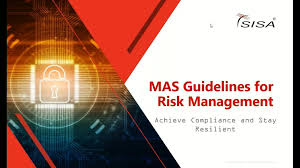
Incident Response Readiness
- Develop comprehensive incident response plans
- Create detailed response procedures for different breach scenarios
- Define clear roles and responsibilities
- Establish communication protocols with regulators and customers
- Regular testing and simulation
- Conduct tabletop exercises and simulated breach scenarios
- Test backup and recovery procedures
- Evaluate response effectiveness and update plans accordingly
- Transparent communication protocols
- Establish clear guidelines for customer notification
- Prepare templates for different breach scenarios
- Train spokespersons on crisis communication
By implementing these measures, Singapore banks can significantly reduce their risk of data breaches and better protect their customers’ sensitive information. The focus should be not just on technology but on creating a comprehensive security culture throughout the organisation and its partner ecosystem.
Encryption
HTTPS, or Hypertext Transfer Protocol Secure, represents a fortified version of its predecessor, HTTP (Hypertext Transfer Protocol). While HTTP serves as the framework for transmitting data across the internet in a client-server architecture—where the web browser interacts with the web server—HTTPS takes this a step further by incorporating encryption. This is achieved through an encryption protocol known as Transport Layer Security (TLS), which evolved from the earlier Secure Sockets Layer (SSL). The purpose of this encryption is to make any data exchanged between the browser and server unreadable to unauthorised parties until it reaches its intended recipient, thereby enabling users to transmit sensitive information like passwords and personal details safely over the internet.

For HTTPS to establish a secure connection, it first needs to build trust between the browser and server. This necessity for trust is underscored by the implementation of HTTP Strict Transport Security (HSTS), which enforces that websites can only be accessed through secure connections.
When compared, HTTPS and HTTP serve similar functions; however, HTTPS distinguishes itself by incorporating an additional layer of security through SSL/TLS encryption. To transition from HTTP to HTTPS, a website must obtain an SSL certificate, often referred to as a security or digital certificate. This small file plays a crucial role in safeguarding sensitive data during transmission by rendering it unreadable while in transit.
The SSL certificate contains a public key that facilitates secure communication from users’ browsers when sending confidential information. Meanwhile, only the domain owner possesses a private key capable of decrypting this information upon arrival at their server. This combination of public and private keys establishes a secure channel for data exchange.
Website owners must acquire an SSL certificate from an accredited Certificate Authority (CA) to enable HTTPS on their domain. When users attempt to connect via HTTPS, their web browsers verify that the provided SSL certificate corresponds with the domain name they intend to visit, ensuring both authenticity and security throughout their online experience.
Why Opt for HTTPS? In today’s digital landscape, HTTPS has emerged as the go-to protocol for online activities, providing the most secure means for users to safeguard their sensitive data. Its importance extends beyond websites that collect user information; even without direct input from users, malicious actors can gather behavioural and identifying details through unsecured connections. While HTTP might offer some advantages to website owners in terms of functionality and user experience, it pales in comparison to the trust that HTTPS fosters among visitors. With HTTPS, users can verify the legitimacy of a site by checking its SSL Certificate against the domain name.

The encryption provided by SSL/TLS ensures that all interactions between clients and servers remain confidential, making it nearly impossible for attackers to access sensitive data. This level of security is particularly vital for online businesses like e-commerce platforms, where potential customers need reassurance that their payment information is safe from prying eyes. Failing to implement HTTPS not only jeopardises customer privacy but also tarnishes a brand’s reputation; unsecured connections leave customer data vulnerable to breaches that could discourage future business.

As HTTPS has become recognised as the gold standard in web protocols, browsers have responded accordingly. For instance, Google Chrome now actively warns users about HTTP sites, while Mozilla Firefox has introduced an HTTPS-only mode. Additionally, Google’s search algorithm favours HTTPS pages over their HTTP counterparts, meaning site owners stand to gain better visibility and SEO rankings by making the switch. The introduction of HTTP/2 in 2015 further emphasised this shift by enhancing browsing speed and overall user experience with new features—most browsers now restrict HTTP/2 usage exclusively to secure sites utilising HTTPS. Consequently, those still operating on HTTP must adapt if they wish to benefit from these advancements.
How can I enhance the security of my website? If your site collects sensitive user information, implementing HTTPS is crucial. Organisations thatprioritizee securityrecognizee its significance; hence, you must validate your website before integrating it with third-party services. Take PayPal, for instance—online payment processors typically require a security certificate to process transactions through their platforms. By securing your site, you also build trust with your visitors, reassuring them that their personal information will be kept confidential.
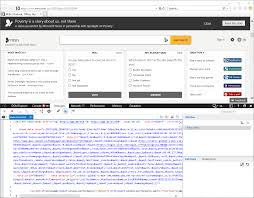
To activate HTTPS on your website, you’ll need to acquire a security certificate from a Certificate Authority (CA). There are six types of certificates available for purchase, each catering to different validation needs and domain structures:
1. Domain Validated (DV) Certificate: Confirms that you control the domain before issuing the certificate.
2. Organisation Validated (OV) Certificate: This certifies the site’s ownership and additional details, such as the domain name and its location.
3. Extended Validation (EV) Certificate: This certificate thoroughly verifies the organisation’s ownership, legal status, and geographical location.
4. Single-name Certificate: Secures one specific subdomain hostname.
5. Wildcard Certificate: Covers an unlimited number of subdomains under a single domain.
6. Multi-Domain Certificates: Can protect up to 100 domains, including subdomains and public IP addresses.
After selecting and purchasing your desired certificate from a CA, you’ll need to install it on your server to enable HTTPS functionality, thus ensuring a secure connection.
Is HTTPS Truly Foolproof?
In today’s digital landscape, HTTPS plays a crucial role in safeguarding online interactions through robust encryption and authentication measures. This technology employs a combination of public and private keys to ensure that data exchanged between users’ browsers and servers remains secure. Additionally, HTTPS mandates the use of digital certificates, which serve as proof that a website’s domain name aligns with its legitimate owners.

For businesses handling extensive customer information, obtaining more advanced certifications is often a way to enhance their trustworthiness and reliability in the eyes of consumers. Yet, despite these protective layers, web users need to remain vigilant while navigating the internet. Cybercriminals can create deceptive redirects leading to harmful sites or impersonate well-known domains, tricking unsuspecting individuals into divulging sensitive information.
To protect themselves online, users should always verify thaURLSLs correspond accurately with their intended destinations. They should also be cautious about where personal details like passwords are entered; if a payment page raises any red flags or seems dubious, it’s wise to refrain from proceeding with the transaction.

A reliable way for users to ascertain whether a website is legitimate is to check for an up-to-date certificate issued by a trusted authority. This certificate should clearly display the correct domain name associated with that site. In this ever-evolving digital world, staying alert is critical to ensuring safe browsing experiences.
The Rising Threat of Ransomware
In the ever-evolving landscape of cyber threats, few instil a more profound sense of dread than ransomware. This malicious software casts a long shadow over both corporations and governmental bodies alike, sending shivers down their spines.
Imagine this scenario: A nefarious actor infiltrates your computer or mobile device with harmful software, rendering it inoperable until you comply with their ransom demands. While you’re left in limbo, grappling with the chaos, critical personal and business data hangs in the balance, at risk of destruction or theft. The potential for financial ruin looms large.

Regrettably, many individuals and organisations find themselves reacting to these attacks rather than taking proactive measures to prevent them. “Stay informed about the latest scams and tactics to protect yourself from falling prey,” advises Jeff Taylor, who oversees commercial fraud forensics at Regions Bank. Hemphasizes that nearly all incidents of ransomware commence with a phishing email or a click on a malicious link, which grants the attackers access to your system. “Take a moment to scrutinise the sender’s email address. Be cautious of unsolicited links or attachments; they could lead you down a dangerous path.”
Yet, amidst this grim reality, there is a glimmer of hope. The Departments of Homeland Security and Justice have teamed up to create a resourceful platform (StopRansomware.gov) designed to assist individuals and organisations in combating these threats effectively.
Furthermore, the American Bankers Association has developed a comprehensive Ransomware Toolkit, which encompasses a structured MAP (Mitigate, Assess, and Prepare) strategy for anyone who suspects they might be under attack from ransomware. With these resources at hand, there’s a pathway to not only defend against such threats but also to navigate the complexities of the digital world with greater confidence.
In the face of a ransomware attack, swift action is paramount to reduce the potential damage. Imagine a bustling office, the hum of computers filling the air, when suddenly, the screens flash with an ominous message demanding payment for the return of critical files. The first step in this chaotic scenario is to identify which devices have fallen victim to this digital menace. Like a detective surveying a crime scene, IT professionals must meticulously isolate the compromised systems. If circumstances allow, the entire network should be taken offline, like closing the doors to prevent any unwelcome intruders from further infiltrating.
As the team gathers information about the infected devices, one crucial rule becomes abundantly clear: do not delete or attempt to repair any corrupted files. In the frantic efforts to restore order, it’s easy to forget that these damaged files hold vital clues to understanding how the breach occurred and what steps need to be taken next. Tampering with this evidence could jeopardise both the investigation and the recovery process, akin to erasing fingerprints at a crime scene.

Meanwhile, amidst the tension, another significant decision looms: Should the affected devices be powered down? While shutting them off might seem like a logical step to contain the infection, it carries its risks. Essential artefacts and evidence could vanish into thin air, leaving behind only questions and uncertainty. Therefore, it falls upon the shoulders of senior leadership to weigh the gravity of virus propagation against the need for evidence preservation. If isolation from the network proves impossible, then powering down those devices may become a necessary evil in the battle against ransomware’s relentless advance.
In this high-stakes environment, every choice matters. The path to recovery begins with careful consideration and decisive action, ensuring that the damage can be mitigated while preserving vital evidence for future prevention.
Assessing the Situation
When faced with the aftermath of a cyberattack, it is crucial first to evaluate the damage inflicted upon your systems. The initial step involves identifying which systems are essential for recovery and prioritising them accordingly. As you embark on this journey of restoration, ensure that you create an image of the affected systems and devices. It’s also vital to gather any pertinent logs or signs of compromise—such as unusual commands—and safeguard this information for further investigation.
Next, take stock of your backup data. Verify that these backups are not linked to the compromised system to avoid the risk of re-infection. To enhance your chances of a successful recovery, consider restoring from the oldest available backup version, ideally one that dates back more than 100 days.
Preparing for Action
As you navigate this tumultuous situation, it’s essential to involve law enforcement in tandem with your legal team. Reach out to agencies like the FBI and the Secret Service, as they can offer valuable intelligence that might help decrypt your systems. They can also guide you through the maze of regulatory reporting requirements that follow such breaches.
In parallel, discuss with senior leadership and your legal advisors whether to pay the ransom that cybercriminals demanded. This decision should not be taken lightly, as it involves multiple stakeholders and significant implications.
Another consideration is whether to engage an external forensic firm. Their expertise could prove invaluable in facilitating recovery efforts, assessing the potential consequences of making a payment, and implementing further protective measures.
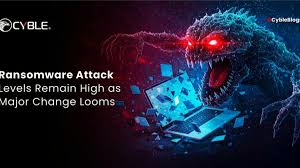
Don’t forget about your customers; they deserve transparency in light of a data breach. Inform both federal and state authorities regarding the incident and identify those customers whose data may have been compromised. It’s essential to file a Suspicious Activity Report with the FBI and adhere to your state’s specific data breach notification laws.
Reflecting on these challenges, Taylor remarked, “Regrettably, any business—no matter its size—can fall victim to ransomware attacks. Crafting a response plan is an essential part of the recovery process. Knowing who to contact, how to reach them, and understanding each participant’s role will pave a clearer path toward recovery during what is undoubtedly a highly stressful period.”
Ransomware continues to thrive as a lucrative enterprise for criminals, raking in hundreds of millions from those caught unprepared. Once again, the ABA steps up with critical insights aimed at recognising and thwarting ransomware threats, reminding us all of the importance of vigilance in safeguarding our digital landscapes.
In today’s fast-paced world, countless individuals appreciate the remarkable convenience offered by online banking. With just a few taps on a screen or clicks of a mouse, users can effortlessly access their financial accounts and manage transactions. A recent survey by Chase in 2023 uncovered that a staggering 87 per cent of Americans engage with their banking apps at least once a month. Yet, with this increasing reliance on digital banking comes an unsettling rise in cybersecurity threats.
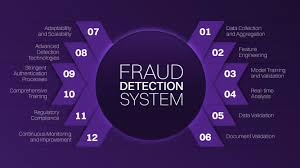
The Federal Deposit Insurance Corporation (FDIC) has taken steps to alert consumers about the prevalence of fraudulent banking websites and deceptive apps designed to pilfer personal information and funds. Awareness of these risks is vital; thus, it’s imperative to adopt measures that safeguard your banking details.
So, how can you ensure the security of your personal financial information? Let’s delve into that question together. First and foremost, it’s essential to understand that while sharing your card number might be commonplace—many retailers, professionals, and online sellers have access to this information—it’s crucial to keep everything else closely guarded. The notion of having your card number out in the open isn’t inherently alarming, but safeguarding the rest of your banking details is paramount. Below are expert recommendations to help you fortify your defences against potential threats.
Employ Distinct Passwords
You’re likely already aware of the importance of a strong password. However, relying solely on one robust password may not be enough to shield your bank account from the prying eyes of hackers. According to cybersecurity expert Weismanutilizingng the same password across various platforms puts all your accounts at risk. If a hacker manages to uncover one password, they could easily infiltrate your other accounts, including those holding sensitive financial data.
Choose Lengthier Passwords
Consider this: a password consisting of 16 characters boasts exponentially more potential combinations than an eight-character password. This fundamental difference makes it nearly impossible for cybercriminals to successfully employ guessing techniques against longer passwords. As you navigate the complexities of online banking, remember that taking these simple yet effective precautions can significantly enhance the security of your personal banking information.
By embracing these practices, you can enjoy the ease of online banking without constantly looking over your shoulder for lurking threats. In a world where convenience meets risk, being proactive about your security can mean the difference between peace of mind and potential peril.
Safeguarding Your Finances: A Modern Tale
In today’s interconnected world, managing finances can be a perilous endeavour, especially in bustling public spaces where the threat of cyberattacks looms large. Imagine yourself at a café, laptop open, coffee steaming beside you, as you log into your bank account to settle bills or transfer funds. It may seem harmless, but this seemingly innocent act could expose you to significant risks. The reality is that any financial transaction conducted without adequate protection is like sailing a ship through stormy seas without a life raft.
To navigate these treacherous waters, consider the power of a Virtual Private Network (VPN). Think of it as a shield that guards your sensitive information while you’re online. For Mac users, installing a VPN not only secures your data but also acts as a fortress against potential cyber threats. Imagine a vigilant guardian, always on the lookout for anyone trying to snoop on your activities, tamper with your connection, or manipulate your cookies. With Veepnpn, this guardian stands firm, ensuring that intruders are kept at bay. Plus, with a complimentary trial period available, you can dip your toes into the world of enhanced security without any commitment.
As you venture deeper into the realm of digital banking, consider turning to mobile banking applications. These innovative tools offer an additional layer of security that often surpasses traditional PC access. Picture this: when you log into your banking app, it’s not just your username and password at play; your phone number plays a crucial role too, creating an added barrier against unwanted access. In moments when swift communication is vital, your bank can reach you instantly via text or email, confirming transactions and keeping you informed. Most individuals keep their phones close at hand—almost like an extension of themselves—making it the perfect device for managing finances securely. However, remember to download apps directly from your bank’s official website rather than third-party stores, and always use them on devices you trust.

In this narrative of digital security, multifactor authentication emerges as a formidable ally. This approach demands that you confirm your identity through at least two distinct methods. Envision this: you enter your password (something you know), then receive a text code on your cellphone (something you have), and perhaps even authenticate through a fingerprint scan (something you are). This trifecta of security ensures that even if one line of defence falters, others remain robust. And as you input sensitive information, using tools like VPN Edge or a similar browser extension fortifies your defenses further—ensuring that no sneaky hacker can intercept your credentials.
Lastly, let’s delve into the realm of password management. With so many passwords to juggle—especially for your banking accounts—it can feel overwhelming. Imagine having a trusty companion by your side: a password manager. This tool not only keeps all your passwords safe and sound but also generates strong ones for you, freeing your mind from the burden of remembering every single detail.
Alternatively, if technology isn’t your cup of tea, jotting down your passwords might be an option. Just ensure they are stored securely away from prying eyes.
Embrace the Power of a Password Manager
In an age where digital security is paramount, navigating the labyrinth of passwords can feel daunting, particularly when it comes to protecting sensitive information like bank account details. Imagine having a trusty companion by your side—this is precisely what a password manager offers. These ingenious tools not only allow you to securely store your various passwords, freeing your mind from the burden of memorisation, but they can also create strong, unique passwords for each of your accounts. With a password manager, you can rest easy, knowing that your online security is in capable hands.
Now, if technology isn’t quite your forte or you prefer a more traditional approach, there’s always the option of jotting down your passwords on paper. Should you decide to go this route to safeguard your financial information from potential fraudsters, it’s crucial to keep that written record locked away in a secure location. After all, the safety of your credentials relies heavily on keeping them out of reach from prying eyes.
Stay Alert with Email Notifications
Rewind a few years, and many customers found themselves blissfully unaware of fraudulent activities until their monthly bank statements arrived in the mail. This delay often resulted in weeks of unchecked unauthorised transactions, allowing fraudsters to wreak havoc. However, thanks to modern alert systems, things have taken a turn for the better. Now, individuals receive immediate notifications about suspicious activity, empowering them to act swiftly in collaboration with their banks to address any discrepancies before they spiral out of control.
Be Wary of Deceptive Communications
As we traverse this digital landscape, it’s vital to remain vigilant against potential threats. Expert advice suggests steering clear of unfamiliar messages and the links they may contain. It’s essential to remember that legitimate banks and credit unions will never reach out requesting sensitive information that they already possess, such as your account number. If you ever find yourself uncertain about a communication, take a moment to contact your bank or credit union directly before divulging any personal information online or through text. This simple step can save you from potential heartache.

The Bigger Picture
Reflecting on the broader implications of these actions reveals a stark reality: According to reports from the Federal Trade Commission, consumers collectively lost nearly $9 billion to fraud in 2022—a staggering 30 per cent increase from the previous year. By staying informed about the ever-evolving landscape of cybercrime and equipping yourself with knowledge on how to protect your personal information, you can take proactive steps to ensure that you don’t become just another statistic in this alarming trend. The journey toward cybersecurity is ongoing, but with awareness and the right tools at your disposal, you can navigate it confidently and safely.
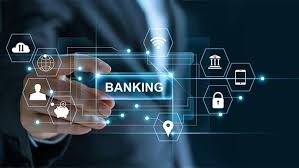
How HTTPS Ensures Cybersecurity in the Maxthon Browser
1. Understand HTTPS Basics: HTTPS, or HyperText Transfer Protocol Secure, is an extension of HTTP that uses encryption to secure data exchanged between the browser and web servers.
2. Encryption Mechanism: When you visit a website that uses HTTPS in the Maxthon browser, your connection is encrypted using SSL/TLS protocols. This means that any data transmitted—such as passwords or credit card information—is scrambled and unreadable to potential eavesdroppers.
3. Data Integrity: HTTPS ensures that the data sent and received has not been altered during transmission. If any tampering occurs, the connection will be terminated, protecting you from malicious local attacks.
4. Authentication Verification: Maxthon’s browser verifies the authenticity of websites through digital certificates issued by trusted CertificatAuthoritiesis helps to confirm that you are communicating with a legitimate website and not an impostor.

5. Visual Indicators: Look for visual cues in the address bar when using Maxthon. A padlock icon signifies a secure connection, and it serves as an easy reference point to gauge whether your browsing session is protected.
6. Protection Against Phishing Attacks: HTTPS can help mitigate phishing threats, in which attackers attempt to trick users into providing sensitive information on fraudulent sites. By ensuring that you’re connected to verified websites, HTTPS can help mitigate phishing attacks.
7. Automatic Redirects: The Maxthon browser often supports automatic redirection from HTTP to HTTPS sites whenever available, further enhancing security without requiring additional user intervention.
8. Regular Updates and Compliance: To ensure continued protection, keep your Maxthon browser up-to-date; updates often include patches for vulnerabilities in encryption protocols or other security measures.
9. Educate Yourself on Safe Browsing Practices. Familiarise yourself with additional cybersecurity practices, such as recognising secure websites and understanding online threats, to maximise our safety while using Maxthon with HTTPS enabled.
By following these principles and leveraging HTTPS features within Maxthon, you enhance your overall cybersecurity while navigating the web.
